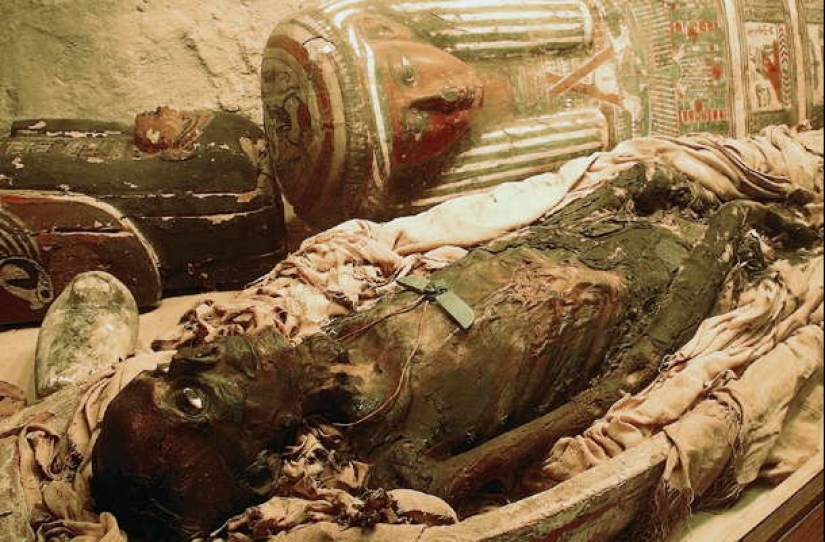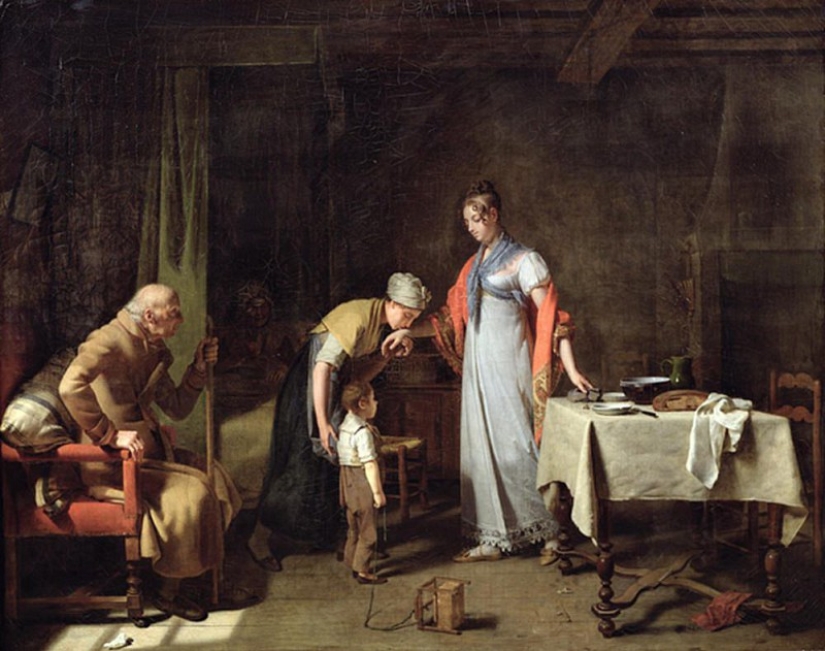Why did Europeans eat Egyptian mummies during the Middle Ages
Categories: Africa | Culture | Europe | History | Nations
By Pictolic https://pictolic.com/article/why-did-europeans-eat-egyptian-mummies-during-the-middle-ages.htmlEuropeans have not always been enlightened. During the Middle Ages, the Italian, French, and German nobility ate the powdered bodies of Egyptian mummies. They did this on the advice of doctors and pharmacists, who treated all diseases in this way.

Ancient Arab and Persian doctors believed in the miraculous effect of natural bitumen, which they used to treat fractures, ulcers and abscesses. This material was called the word "mum", which means "wax"in Arabic. In the VII century, the doctor ibn Betar wrote that the "mummy substance" is especially abundant in the country of Apolonia (Egypt), where it descends from the mountains in luminous streams, hardens on the river bank and acquires the smell of tar.

Natural bitumen
The ancient healer noted that it is possible to find a miraculous mumm in the skulls and stomachs of the Egyptian dead, buried a thousand years ago. During the Middle Ages, medical treatises of the Arabs were translated in European universities, from where knowledge about the mummy spread throughout Christian lands. However, the medicine began to be considered not natural bitumen, but directly a mummy.
By the XIII century, everyone in Europe knew that the mummy was a medicinal substance from the Egyptian pyramids, which could cure any disease. The medieval mathematician, physician and astrologer Gerard of Cremon wrote:
"This is a substance that can be found in the lands where bodies are buried, embalmed with aloe, with which the liquids from the body are mixed and turned into a mummy."

Mummies were sold both in pieces, together with bandages, and in the form of powder, which doctors recommended adding to food. By the XVI century, a full-fledged market for the sale, processing and purchase of dried bodies was formed.

The poorer nobles and merchants were limited to Arab mummies, and the richest feudal lords bought only mummies from ancient Egyptian tombs, which were called mumia sepulchorum. It was believed that such remains have a miraculous life-giving power.
Mummies from the Middle East were sent to Europe by the ton. Arab and Jewish merchants did not understand how they could eat this stuff, but they did not refuse to earn money. European travelers wrote that the Egyptians scour their country around the clock and take the mummies to Cairo, where they hand them over to merchants.

Most often they were the dead from early burials. In the time of the pharaohs, an alkaline decoction of wood ash and resin was used for mummification. Due to the high cost, it was replaced with natural bitumen. The resin penetrated into the tissues, and the body turned black.

Italian, French and German pharmacists ground such a mummy into powder and sold it for a lot of money. The Arabs began to massively sell fakes of real Egyptian mummies. The bodies of executed criminals, deceased beggars, slaves and children were used, whose corpses were covered with natural bitumen, dried in the sun and sold wholesale from Lisbon to Warsaw.
By the end of the XVII century, the situation had changed and most doctors considered the treatment of mummies to be ordinary quackery. However, the "medicine" was not forgotten. In 1912, the German pharmaceutical company Merck included the mummy in the official catalog of its products.

A street vendor of mummies
After the Egyptian campaign of Napoleon, there was a sharp increase in interest in the history of the ancient civilization of the Pharaohs in Europe. The French and the British massively bought papyri, figurines, ceramics and, of course, mummies. The Arabs again began to bring to the markets the dried bodies of long-dead people, among whom were the pharaohs.

Mummies were no longer eaten, but they were used as entertainment at balls and meetings of the bohemians. French nobles specially gathered in the evenings and watched the process of unwinding bandages. Tickets were even sold for such events.
Egyptian mummies were also used in art. The dried bodies were ground into a powder, on the basis of which a brown paint was made. For the saturation and depth of the color of the pigment, white resin and miro were added to it. The paint was called Mummy Brown, and it was used since the late Middle Ages, up to the XVIII century.

It was only in 1964 that the English firm C. Roberson stopped producing artistic material from the bodies of deceased people. Today, this paint has been replaced by the pigment Caput Mortuum (dead head), which is made on the basis of iron oxide.
Keywords: Egypt | Painting | Paints | Medicine | Mummies | The Middle Ages
Post News ArticleRecent articles

Most of us think that the color of the eggshell does not play any role and it is possible not to pay attention. But it's not and ...

The more we rely on technology, the more potential power hackers gain over us. It doesn't matter if their goal is to help or cause ...
Related articles

Russian artist Andrey Shatilov has chosen a difficult path — he paints oil paintings. In the digital age this commitment to ...

In November 69 BC, she was born Cleopatra, the last Queen of Egypt from the Macedonian dynasty of the Ptolemies. Cleopatra, perhaps ...

Artists perpetuate the images of his muses in paintings, sculptures and other works. Them they draw inspiration for creativity. ...

Creating a good portrait is one of the most difficult tasks for any photographer. In order to make a really natural and memorable ...